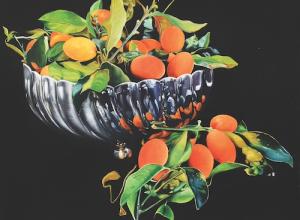“It's the first time I've worked on a movie that felt grander and bigger than the budget. Not having that much money is usually better for me,” Becker tells Art & Object. “I think I want to work on lower budget films now. It seems like the bigger the budget, there’s always more voices, always more input, there’s always disagreement, and you get this product that is a compromise in a lot of ways. Sometimes the low budget film is really a director's vision and it’s the best one.”
The centerpiece of the film is the Van Buren Institute, a large scale church and community center built in brutalist style. To come up with the design, Becker channeled Marcel Breuer, the architect behind notable structures like The Met Breuer (formerly The Whitney), and Paris’ UNESCO Headquarters. Like Tóth, he was a refugee working in the Bauhaus tradition. Unlike Tóth, he came over before the war.
The Van Buren Institute sits on a hill, its tall steeple forming the outline of a cross that casts a powerful shadow on the land when the sun is just right.






























